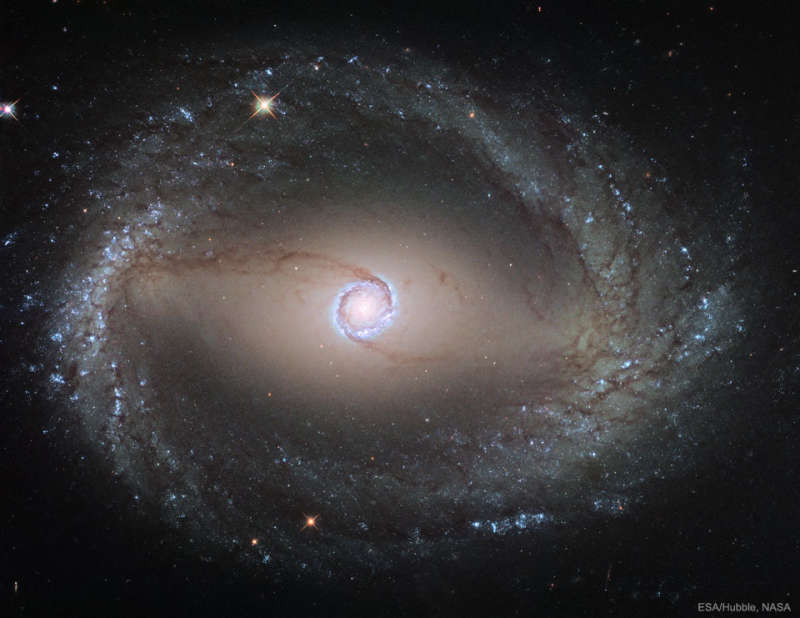
|
Explanation: Most galaxies don't have any rings -- why does this galaxy have two? To begin, the bright band near NGC 1512's center is a nuclear ring, a ring that surrounds the galaxy center and glows brightly with recently formed stars. Most stars and accompanying gas and dust, however, orbit the galactic center in a ring much further out -- here seen near the image edge. This ring is called, counter-intuitively, the inner ring. If you look closely, you will see this the inner ring connects ends of a diffuse central bar that runs horizontally across the galaxy. These ring structures are thought to be caused by NGC 1512's own asymmetries in a drawn-out process called secular evolution. The gravity of these galaxy asymmetries, including the bar of stars, cause gas and dust to fall from the inner ring to the nuclear ring, enhancing this ring's rate of star formation. Some spiral galaxies also have a third ring -- an outer ring that circles the galaxy even further out.
Two Weeks from Today:
An American total eclipse of the Sun
|
January February March April May June July August September October November December |
| ||||||||||||||||||||||||||||||||||||||||||||||||
NASA Web Site Statements, Warnings, and Disclaimers
NASA Official: Jay Norris. Specific rights apply.
A service of: LHEA at NASA / GSFC
& Michigan Tech. U.
Based on Astronomy Picture
Of the Day
Publications with keywords: spiral galaxy - NGC 1512
Publications with words: spiral galaxy - NGC 1512
See also:
- APOD: 2025 September 4 B NGC 4565: Galaxy on Edge
- APOD: 2025 August 22 B A Tale of Two Nebulae
- APOD: 2025 August 19 B Giant Galaxies in Pavo
- APOD: 2025 August 18 B NGC 1309: A Useful Spiral Galaxy
- APOD: 2025 July 4 B NGC 6946 and NGC 6939
- APOD: 2025 June 30 B NGC 4651: The Umbrella Galaxy
- APOD: 2025 June 19 B NGC 3521: Galaxy in a Bubble
